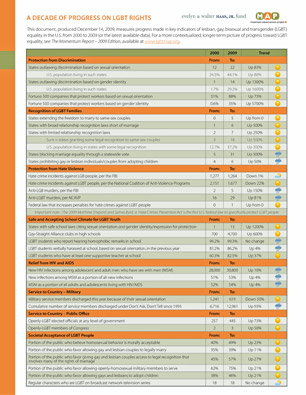The Bottom Line
Remarkable movement toward equality for LGBT people tends to be obscured by day-to-day struggles over hot-button issues. This report provides a fuller perspective on the movement’s progress by examining dramatic gains made in the U.S. from 2000 to 2009 across 36 benchmarks. Two-thirds of these benchmarks show significant advances, including sharp increases in the number of LGBT Americans protected by nondiscrimination and relationship recognition laws at the state level. Less than one-quarter of the indicators are negative, and four metrics show little change, either positive or negative.
- A Decade of Progress on LGBT Rights Download


